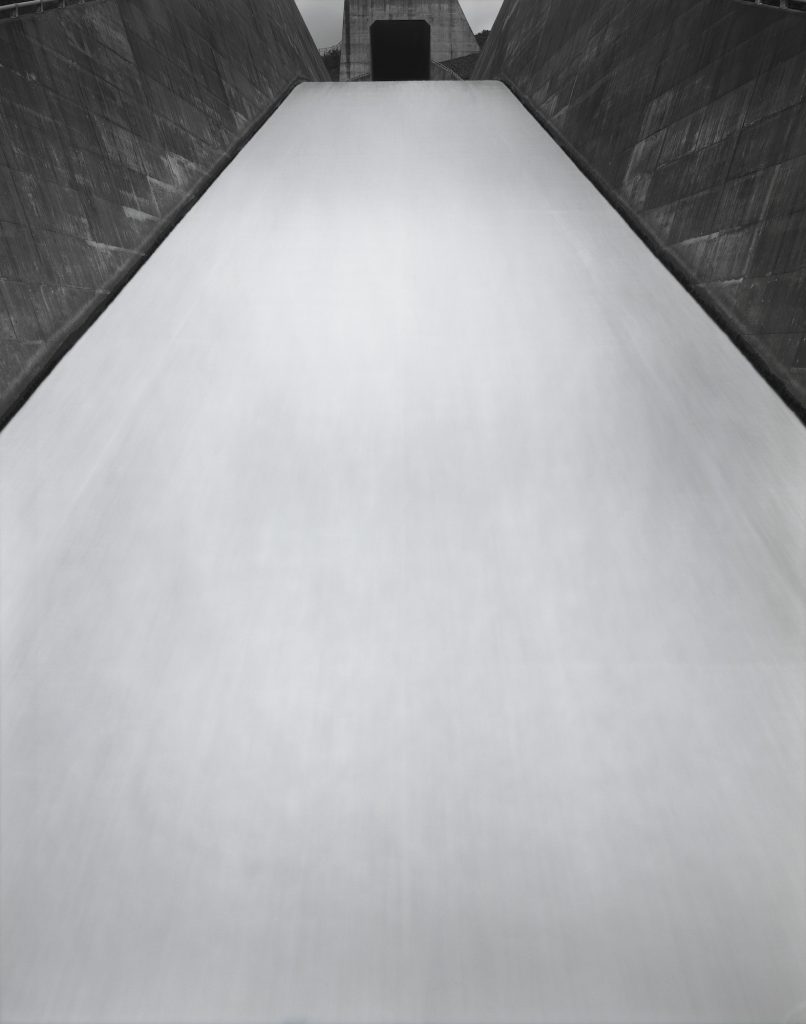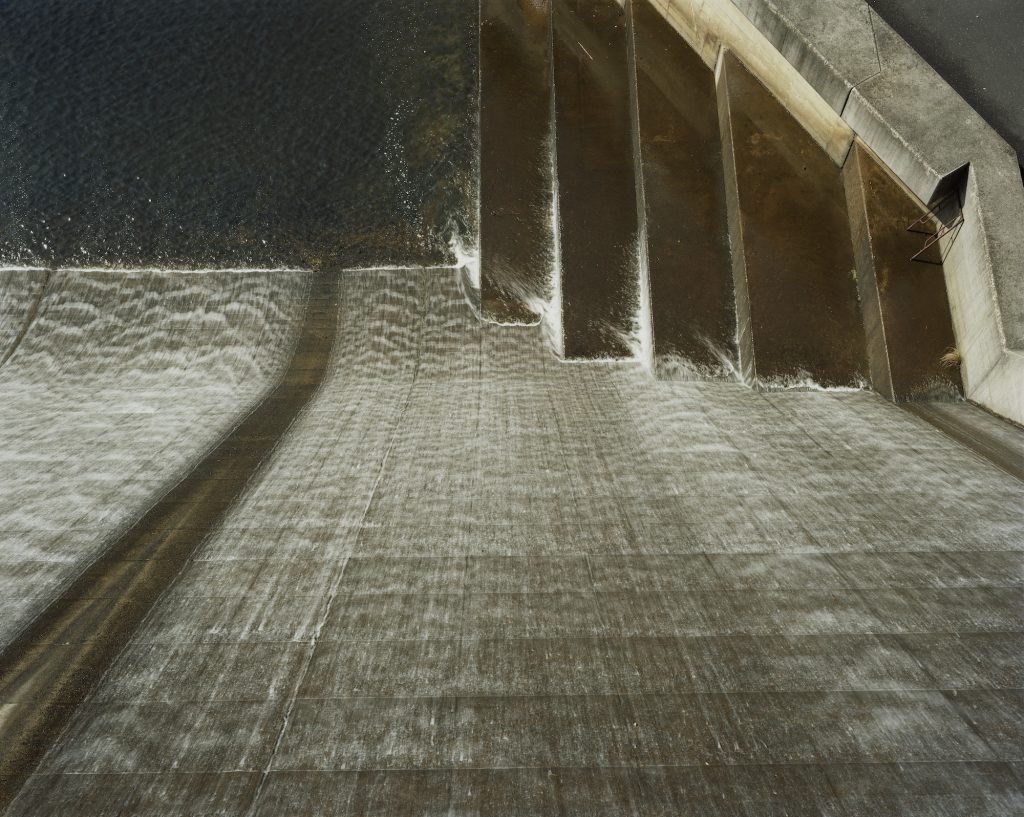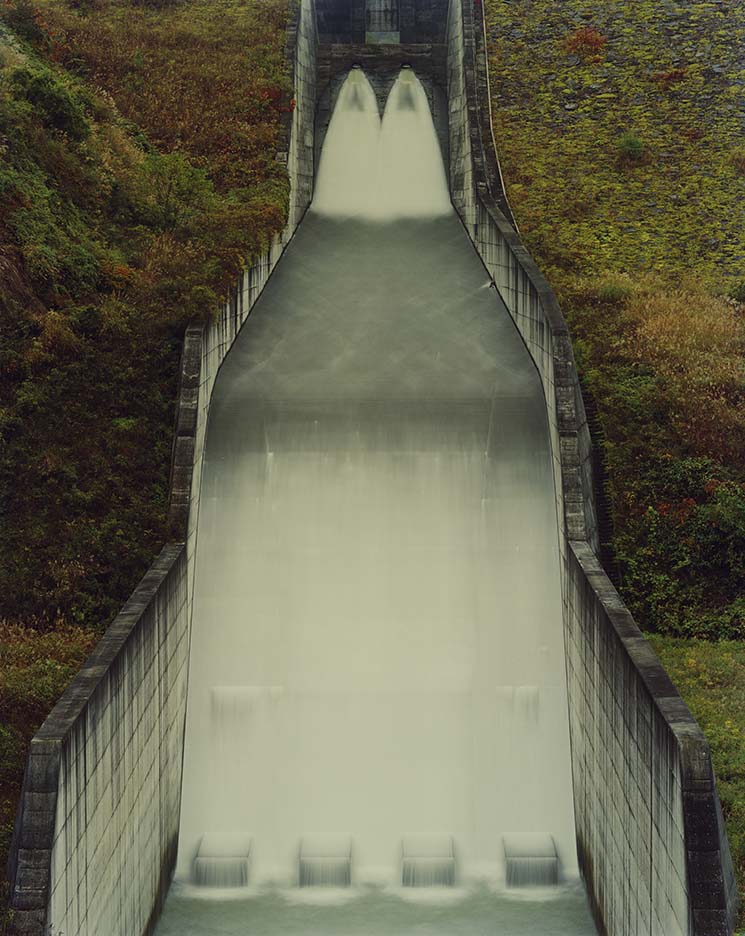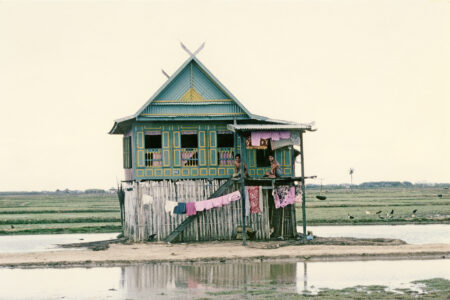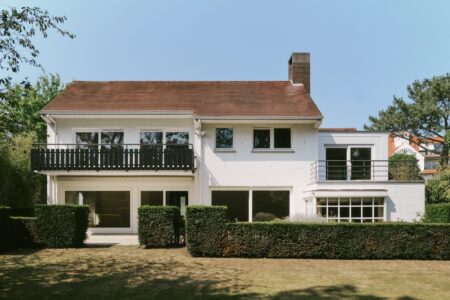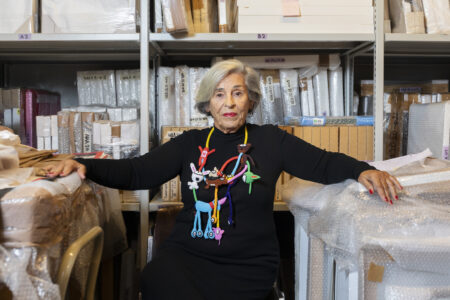
The Constructed Landscapes of Toshio Shibata
A/W 2021: TLmag36: All Is Landscape, featured a photography portfolio of the sublime work of Japanese landscape photographer Toshio Shibata.
Toshio Shibata first studied painting and fine art in Japan before turning to photography in the mid-1970s. This fact is not all too surprising to learn; there is a painterly quality to much of Shibata’s work – and a sense of distortion that displaces us momentarily as we try to process what he has captured. This is particularly felt in the photographs of waterfalls in which the rush of falling water looks as if it was made of delicate strokes of oil paint in a photo realist painting, the flow too powerful and graceful to be contained in these strange, man-made structures. Water is a common theme in much of Shibata’s work and his use of long exposure enhances its multifaceted beauty. Linear framings, patterns, unexpected textures and surfaces enhance this painterly quality. Shibata has said, “My goal is to create with each photograph an independent work that is called a ‘tableau’. It is not my aim to make a depiction in order to explain, nor to make images to illustrate an essay; it is to pursue the possibility of new expression by means of photography.”
While much of his work is focused on civil engineering projects in the landscape, the work does not feel documentarian or immediately about the environment, rather it takes us out of reality before bringing us back in. We seek to make sense of the composition – the forms and shapes that compile it before realising the unusual context. It is a landscape, yet not immediately recognizable as such in many cases. The structures feel misplaced, as if collaged into the landscape around them, a fantasy-scape as a painter might envision. Toshio Shibata was born in 1949 and his work has been exhibited internationally since 1971. He has had solo show at major museums including the Tokyo Metropolitan Museum of Photography; the Sprengel Museum in Hanover; the Centre National de Photographie in Paris; the Cleveland Museum of Art, the Art Institute of Chicago; and the Museum of Contemporary Art in Chicago. His work is represented in a variety of museum collections including Metropolitan Museum of Art, New York; Museum of Fine Arts, Houston; Museum of Contemporary Art, Chicago; the Denver Art Museum: Sprengel Museum, Hannover; Tokyo Metropolitan Museum of Photography; and Centre national de la Photographie, Paris.
ibashogallery.com
@ibasho_gallery
laurencemillergallery.com
@laurencemillergallery
